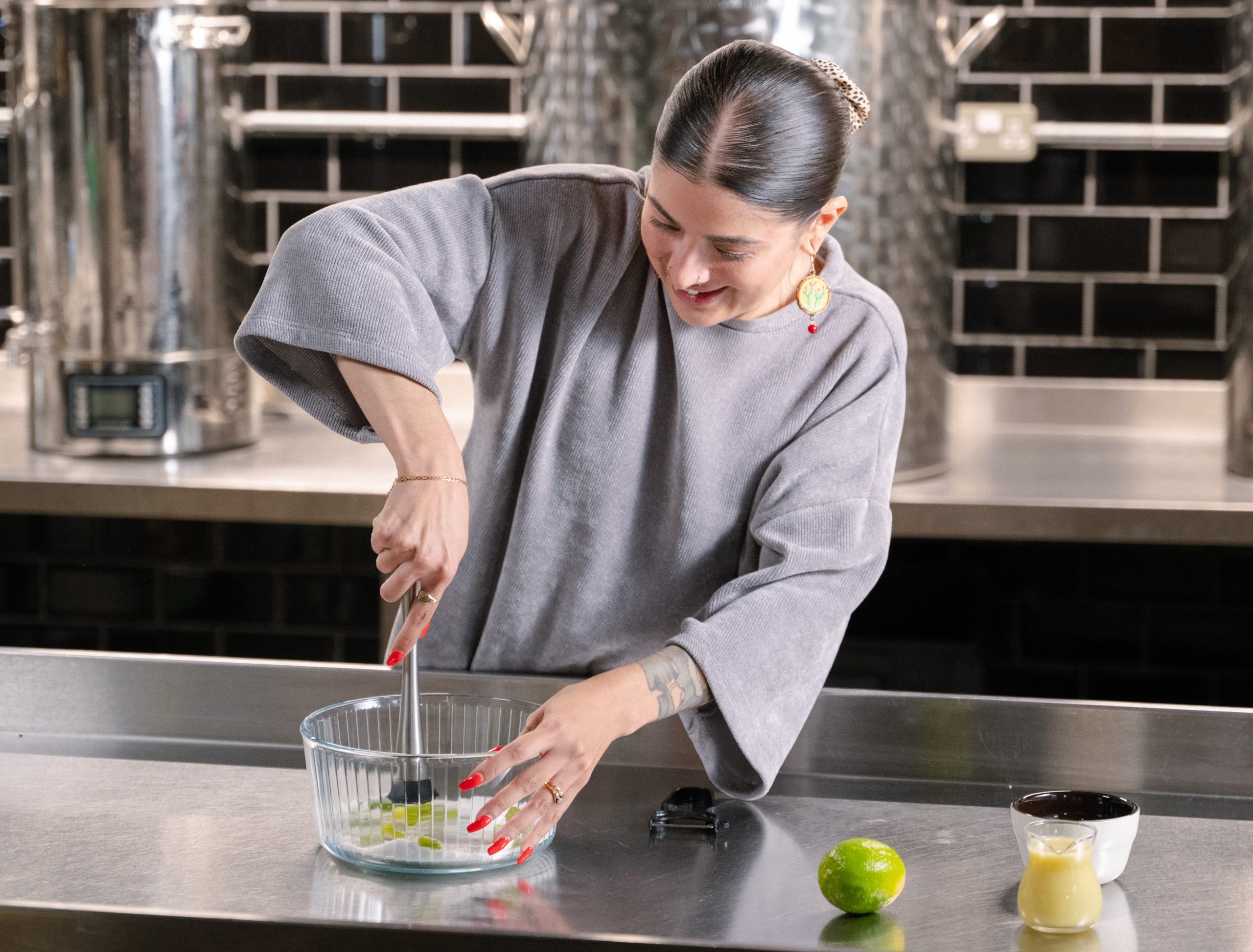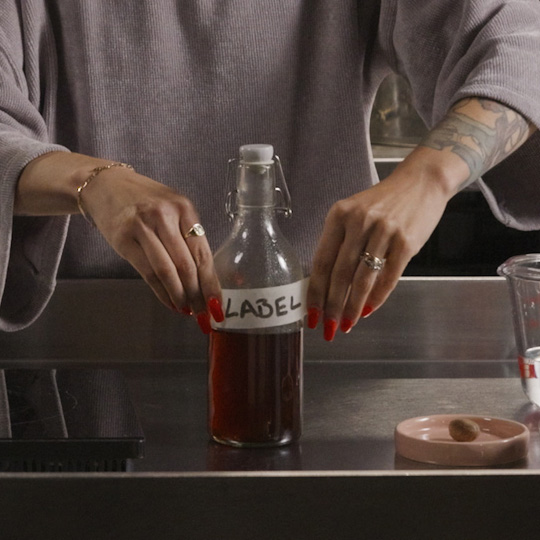
How to Make Simple Syrups and Cordials for Your Cocktails
If you’re looking for step-by-step instructions on how to make syrups and cordials for cocktails, you’ve come to the right place!
Syrups and cordials are extremely versatile modifiers that can enhance your drinks through interesting flavour infusions that elevate your cocktails, taking them to the next level. Let’s dive in!
Understanding Cocktail Syrups
Cocktail syrups, an essential component in mixology, are a diverse and flavorful category of ingredients that play a pivotal role in shaping the taste, aroma, and complexity of cocktails. These sweetened liquid concoctions are made by dissolving sugar into water and are often infused with a variety of flavors, ranging from classic to exotic.
Common versions include vanilla syrup, which adds a lusciously sweet and aromatic note to drinks, mint syrup, which imparts a refreshing and invigorating undertone, and citrus syrup, known for its tangy and zesty profile. Each syrup offers a unique and distinct character, allowing mixologists to craft an assortment of cocktails with diverse flavor profiles.
The benefits of incorporating syrups into cocktails are multifaceted. Firstly, they provide an efficient method for sweetening beverages, ensuring that the sweetness is evenly distributed throughout the drink. Additionally, syrups serve as a vehicle for infusing cocktails with a wide spectrum of flavors, thus enabling mixologists to create complex and well-balanced libations. Furthermore, the viscosity and texture of syrups contribute to the mouthfeel of cocktails, enhancing the overall drinking experience.
How to Make a Simple Syrup for Cocktails
1. Gather and Measure Your Ingredients
- For a one to one (1:1) mix, you will need to measure out 1 cup of granulated sugar and 1 cup of water.
- For flavoured syrups, you will need additional ingredients such as fruits or herbs. For example, depending on the flavour you want to achieve you could use vanilla extract, mint, citrus zest etc.
2. Combine in a Saucepan and Heat the Mixture
- Pour the sugar and water into a small saucepan and place it over medium heat.
- Medium heat is essential to avoid caramelizing the sugar and creating a burnt or bitter taste in the syrup. It allows the sugar to dissolve evenly and the flavors to infuse properly without scorching or creating undesirable flavors in the final product
3. Stir Until the Sugar is Dissolved
- Stir the mixture continuously until the sugar is completely dissolved into the water. This should take about 2-3 minutes. The syrup will become clear as the sugar dissolves.
4. Bring to a Simmer (Optional):
- Once the sugar has dissolved, you can bring the mixture to a simmer if you like, but avoid boiling. This step is optional and usually done if you’re infusing additional flavours.
5. Cool the Syrup and Transfer to a Container
- Next, remove the saucepan from the heat. Allow the syrup to cool to room temperature, then pour the cooled syrup into a clean, airtight container or jar.


Tips When Making Your Cocktail Syrup
1. If infusing herbs or spices, let the syrup steep with the added ingredients for an additional 10-15 minutes after removing from heat. Strain well before storing.
2. If your syrup crystallizes or separates, gently reheat and stir to re-dissolve the sugar.
3. For citrus or mint simple syrups, be sure to strain out the added ingredients before storing.
4. Once the syrup has cooled, store it in a glass bottle or airtight container in the refrigerator. Proper storage will help maintain the quality and freshness of the syrup.
5. Experiment with different types of sugar (e.g., demerara, honey, agave) and flavor combinations to create unique and interesting syrups that can enhance your cocktails.
How Long do Cocktail Syrups Last?
Cocktail syrups can have varying shelf lives depending on their ingredients and storage conditions. A basic simple syrup and herb-infused syrups can typically last up to a month if stored properly. However, syrups containing ingredients like mint and citrus may only last 1-2 weeks due to their perishable nature.
On the other hand, if a simple syrup is infused with alcohol, it can be kept for up to 6 months after creation. Proper storage is crucial for maintaining the quality of syrups, so it’s recommended to store them in airtight containers, refrigerate them, and label them with the date they were made to ensure freshness and safety.
Understanding Cocktail Cordials
Syrups are sugar-water solutions infused with various flavours, while cordials are more complex and can include sugar, acids, salt and multiple flavours.
Similar to simple syrups, cordials come in various flavor variations. Some popular ones include elderflower, which provides a delicate and floral flavor, berry cordials, which add a sweet and fruity taste, and ginger cordials, which provide a spicy and aromatic kick to cocktails.
The benefits of adding cordials to cocktails are numerous. They can enhance the overall flavor profile of the drink, add complexity and depth, and provide a unique and distinctive twist. Additionally, cordials can often serve as a sweetening agent, while simultaneously contributing interesting sour notes and other complementary flavors to the cocktail. Their versatility and ability to elevate a cocktail’s taste make them a valuable addition to any bar.
How to Make Cordials for Cocktails
1. Gather and Prepare Your Ingredients
- Start by measuring 1 cup of granulated sugar, 1 cup of water and 2 cups of fruit.
- Select your fruit of choice (blueberries, raspberries, pineapple etc).
- If using large fruit, such as pineapple, please ensure you wash and chop the fruit into small pieces. If using berries, you can keep them whole. For citrus, remove the seeds and cut into chunks.
- You could add 1/4 cup of lemon juice (for tartness and preservation) or herbs or spices (e.g., mint, cinnamon) for added flavour, both are optional.
2. Combine, Heat and Simmer:
- Place the chopped fruit in a medium saucepan and add 1 cup of water.
- Bring the mixture to a boil over medium heat. Once boiling, reduce the heat and let it simmer for about 10-15 minutes, or until the fruit is soft and the flavours have melded together.
3. Mash or Blend (Optional):
- For a more intense flavour, mash the fruit, or blend the mixture with a hand held blender to break down the fruit further. This step is optional but does help to enhance the flavour.
4. Strain the Mixture:
- Next, pour the fruit mixture through a fine mesh strainer or cheesecloth and into a clean bowl or saucepan to remove the fruit solids. Press or squeeze to extract as much liquid as possible and discard the solids.
5. Add Sugar and Heat Until Dissolved:
- Return the strained liquid to the saucepan and add 1 cup of granulated sugar. Stir well to combine.
- Heat the mixture over medium heat again, stirring continuously until the sugar is completely dissolved. Avoid boiling the mixture after adding sugar.
6. Cool and Transfer to a Container:
- Allow the cordial to cool to room temperature.
- Pour the cooled cordial into a clean, airtight container or bottle.
- Store the cordial in the refrigerator. It typically lasts for 1 to 3 months, depending on the type of fruit and added preservatives like lemon juice.


Tips When Making Your Cordial for Cocktails
1. Experiment with Flavor Combinations: Try different fruits, herbs, and spices to create unique flavor profiles that complement and enhance your cocktails.
2. Use High-Quality Ingredients: Choose fresh, ripe fruits and high-quality herbs or spices to ensure a rich and vibrant flavor in your cordial.
3. Balance Sweetness with Acidity: Taste the cordial before adding all the sugar. Adjust the sweetness by adding more sugar or diluting with water if necessary, and consider incorporating a touch of citrus juice to balance out the sweetness.
4. Label and Date Your Cordial: Properly label the container with the date of preparation and the flavor to keep track of its freshness. This will help you know when it’s time to use or refresh the cordial.
5. Infusion Time: The length of time you let the ingredients infuse will affect the final flavor of the cordial. Taste it periodically to ensure it reaches the desired intensity of flavor and then strain out the ingredients once the desired flavor is achieved.
Are Cordials and Liqueurs the Same?
No, cordials and liqueurs are not the same, although the terms are sometimes used interchangeably, which leads to confusion.
Cordials are typically sweeter, non-alcoholic and added to beverages to impart sweetness. While liqueurs, on the other hand, infuse a base spirit (like vodka, brandy, or rum) with fruits, herbs, spices, flowers, or other flavourings, and then sweetened with sugar or syrup. They contain alcohol, typically ranging from 15% to 55% alcohol by volume (ABV) and are used in cocktails, served neat, over ice, or added to desserts.
For more insights into the world of bartending, head to Jameson Hosts Hub.



